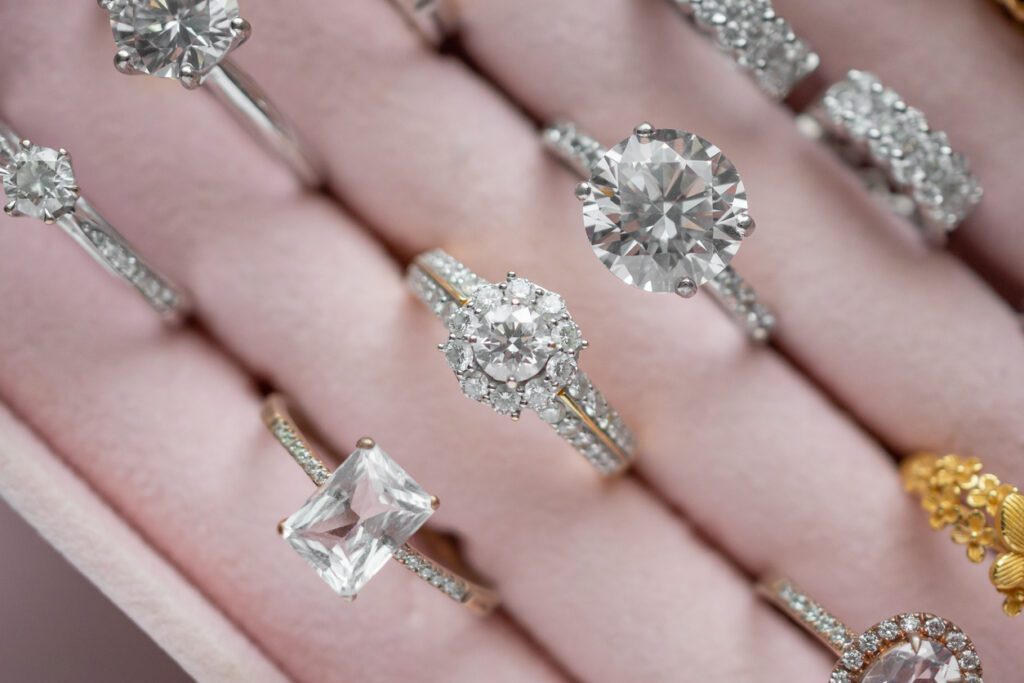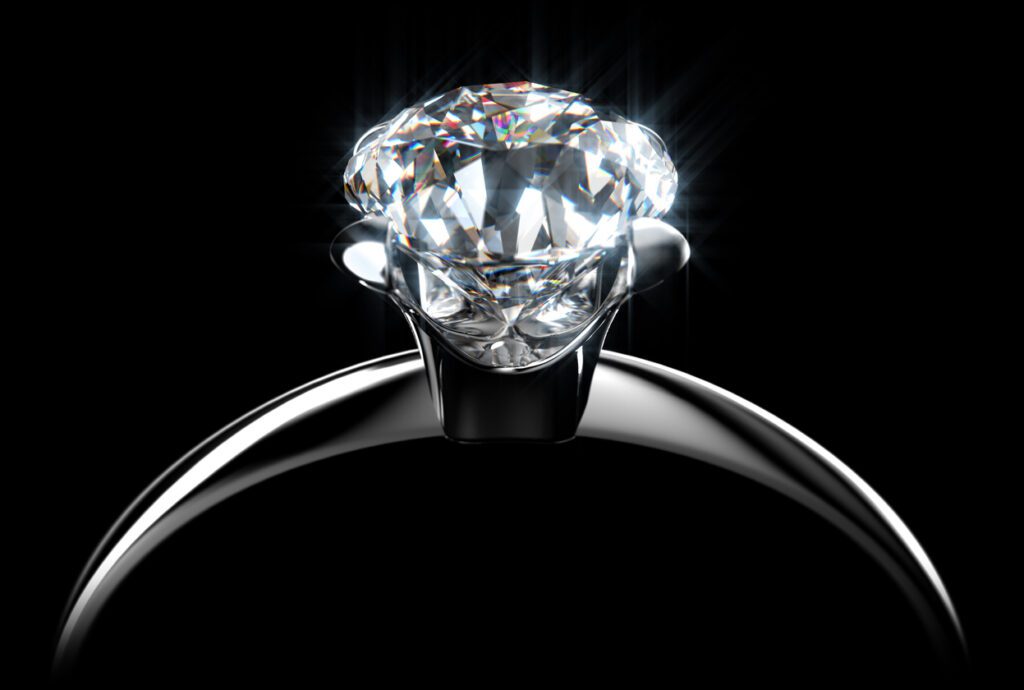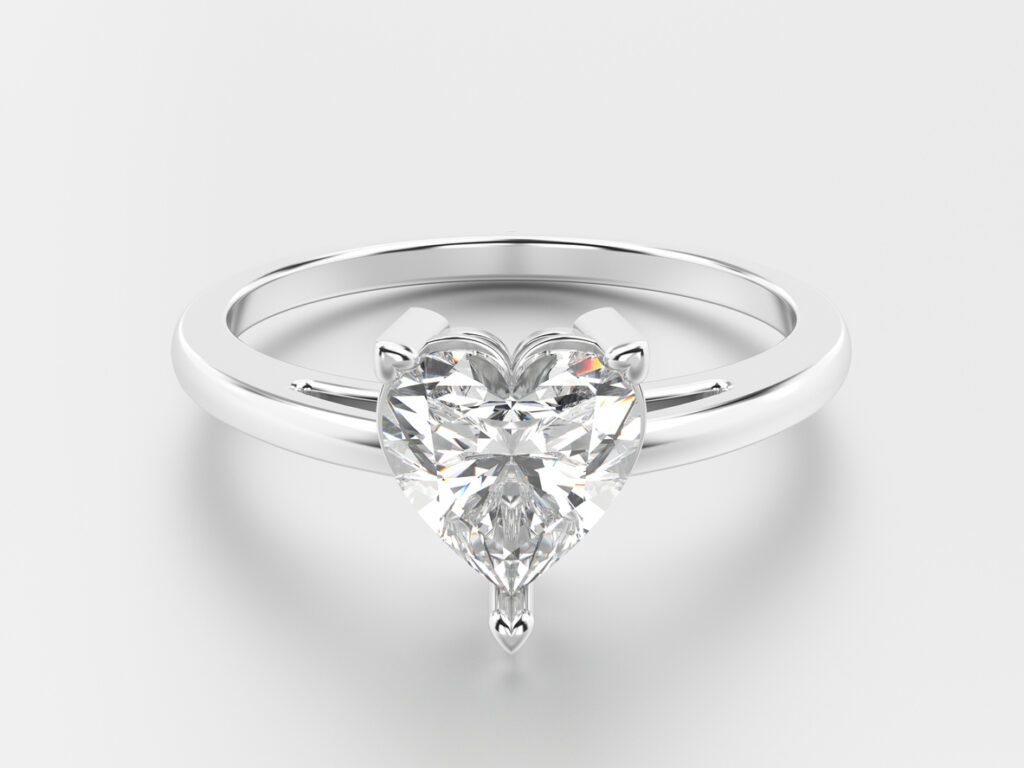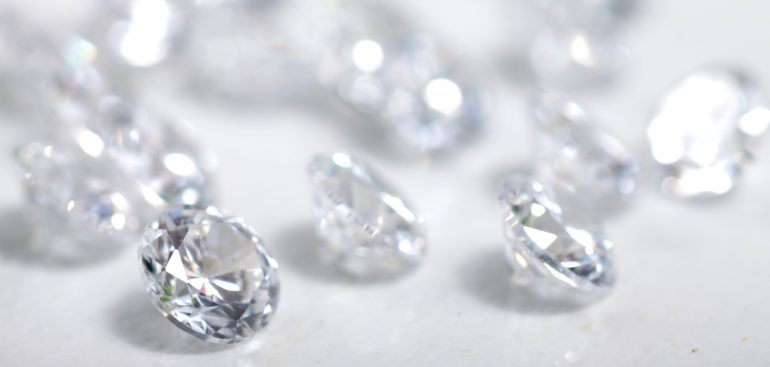Diamonds have transcended time, captivating hearts with their brilliance, symbolizing love, luxury, and eternal commitment. This enduring allure has made diamonds a timeless choice for gifts, especially during the holiday season. As we look into the evolution of diamond cuts over the past century, we’ll explore the rich history and cultural significance of these precious gems, highlighting how they continue to be a wonderful and cherished gift for the holidays.
The Early Years: Classic Cuts and Art Deco Elegance

In the early 1900s, diamond cuts like the Old Mine and Old European cuts graced the jewelry scene. Characterized by high crowns and deep girdles, these cuts exuded a unique brilliance. However, the wasteful nature of these cuts, which required a significant sacrifice of rough diamonds, paved the way for change. The 1920s ushered in the Art Deco era, emphasizing geometric shapes and clean lines. This aesthetic shift was mirrored in the popularity of emerald-cut and Asscher-cut diamonds, featuring square or rectangular shapes and a step-cut pattern for a modern and sophisticated appearance.
The Mid-Century: The Rise of the Round Brilliant

In the 1930s, Belgian mathematician Marcel Tolkowsky revolutionized diamond cutting with the modern round brilliant cut. Designed to maximize brilliance and fire, this cut quickly became the world’s favorite. The 1940s and 1950s saw a surge in popularity, fueled by De Beers’ iconic “A Diamond is Forever” campaign, solidifying the round brilliant cut as the quintessential choice for engagement rings.
The Late 20th Century: Diversification and Experimentation

The late 20th century witnessed a growing interest in alternative diamond cuts, driven by the availability of larger rough diamonds. Alongside the classic round brilliant, princess-cut, marquise-cut, and oval-cut diamonds gained popularity, offering diverse shapes to express individual tastes.
Today’s Trends: A Global Perspective

Sustainability and Ethical Sourcing: Consumers are increasingly interested in the ethical and environmental impact of their purchases. This trend has likely continued, with a demand for diamonds responsibly sourced and adhere to ethical labor practices.
Lab-Grown Diamonds: The popularity of lab-grown diamonds was on the rise due to their ethical and environmental advantages. As technology continues to advance, lab-grown diamonds may have become an even more mainstream choice.
Customization: The desire for personalized and unique pieces remains a strong trend. Consumers are likely to seek custom-designed jewelry, allowing them to choose specific diamonds, settings, and designs that resonate with their individual tastes.
Online Purchases: The trend of purchasing diamonds and jewelry online has been growing, driven by convenience and the ability to compare a wide range of options. Digital platforms may continue to play a significant role in the diamond market.
Colored Diamonds: Fancy colored diamonds, with their unique and vibrant hues, gained popularity. This trend may have continued, with a growing appreciation for diamonds in various colors.
Vintage and Vintage-Inspired Designs: Vintage and vintage-inspired designs often offer nostalgia and uniqueness. This trend might have continued, with consumers appreciating the character and craftsmanship of older styles.
Alternative Diamond Cuts: Beyond the traditional round brilliant cut, alternative cuts and shapes were becoming more popular. The desire for unique and distinctive designs may have led to an increased interest in non-traditional diamond shapes.
In the United States, the round brilliant cut remains dominant, followed by the princess cut and oval cut. Meanwhile, in Europe, the Asscher-cut diamond experiences a resurgence, and in Asia, the marquise cut holds favor.
The Asscher cut was first popularized in the early 1900s. It is an art deco style, and it has made its comeback with today’s shoppers loving it.
There are two types of Asscher cut diamonds on the market. Joseph Asscher designed the standard Asscher cut in 1901. The standard Asscher is crafted with 58 facets in an octagonal shape.
The second type of Asscher cut is the Royal Asscher cut, designed by Joop and Edward Asscher in 2001. It features 75 facets and a higher crown.
The Value of Diamonds Today
The value of a diamond is determined by the “Four Cs” — carat weight, cut, color, and clarity. These are industry-standard criteria used to evaluate and assess the quality of a diamond. Here’s a brief explanation of each factor:
Carat Weight: This refers to the size of the diamond and is measured in carats. Larger diamonds are generally rarer and, therefore, can be more valuable.
Cut: The cut of a diamond refers to how well it has been shaped and faceted. The cut affects how the diamond reflects light, contributing to its sparkle and brilliance. A well-cut diamond is more valuable than one with a poor cut.
Color: Diamonds come in a range of colors. The Gemological Institute of America (GIA) grades diamonds on a scale from D (colorless) to Z (light yellow or brown). Colorless diamonds are generally considered more valuable.
Clarity: This assesses the presence of any internal or external flaws, known as inclusions and blemishes, respectively. Clarity is graded from Flawless (no imperfections visible under 10x magnification) to Included (imperfections visible to the naked eye). Diamonds with fewer inclusions are typically more valuable.
In addition to the Four Cs, other factors can influence the value of a diamond:
Shape and Proportions: The overall shape and proportions of the diamond can impact its value. Different shapes may have different price points.
Certification: A reputable diamond grading report, such as one from the GIA, can enhance the perceived value of a diamond. It provides an objective assessment of the diamond’s quality based on the Four Cs.
Market Demand: Trends and consumer preferences can affect the value of diamonds. For example, certain shapes or colors may be more popular at different times.
Rarity: Unique characteristics, such as a rare color or the absence of certain inclusions, can increase the rarity and value of a diamond.
It’s important to note that individual preferences also play a role in determining the value of a diamond. Some people may value certain characteristics more than others based on their personal taste and priorities. Additionally, ethical considerations and the source of the diamond (natural or lab-grown) can influence its perceived value.

R and J Jewelry Loan San Jose California
For those seeking a beautiful and unique diamond for the holidays, R and J Jewelry Loan in San Jose, California, is an excellent starting point. Offering a wide variety of diamond cuts, including the classic round brilliant and modern styles, their experienced staff can help you find the perfect diamond that aligns with your budget and style preferences. Conclusion: A Reflection of Changing Times and the Timeless Gift of Diamonds for the Holidays The evolving popularity of diamond cuts over the past century mirrors changing tastes, technological advancements, and cultural influences. From the classic elegance of the Old Mine cut to the modern sophistication of the round brilliant, diamonds have always held a special place in our hearts. As we embrace new cutting techniques and discover new sources of rough diamonds, the landscape of diamond cuts will undoubtedly continue to evolve. This holiday season, consider the enduring allure of diamonds as a timeless and meaningful gift, symbolizing love, luxury, and everlasting commitment. Visit R and J Jewelry Loan San Jose, California to explore their exquisite selection and make this holiday season truly special.
